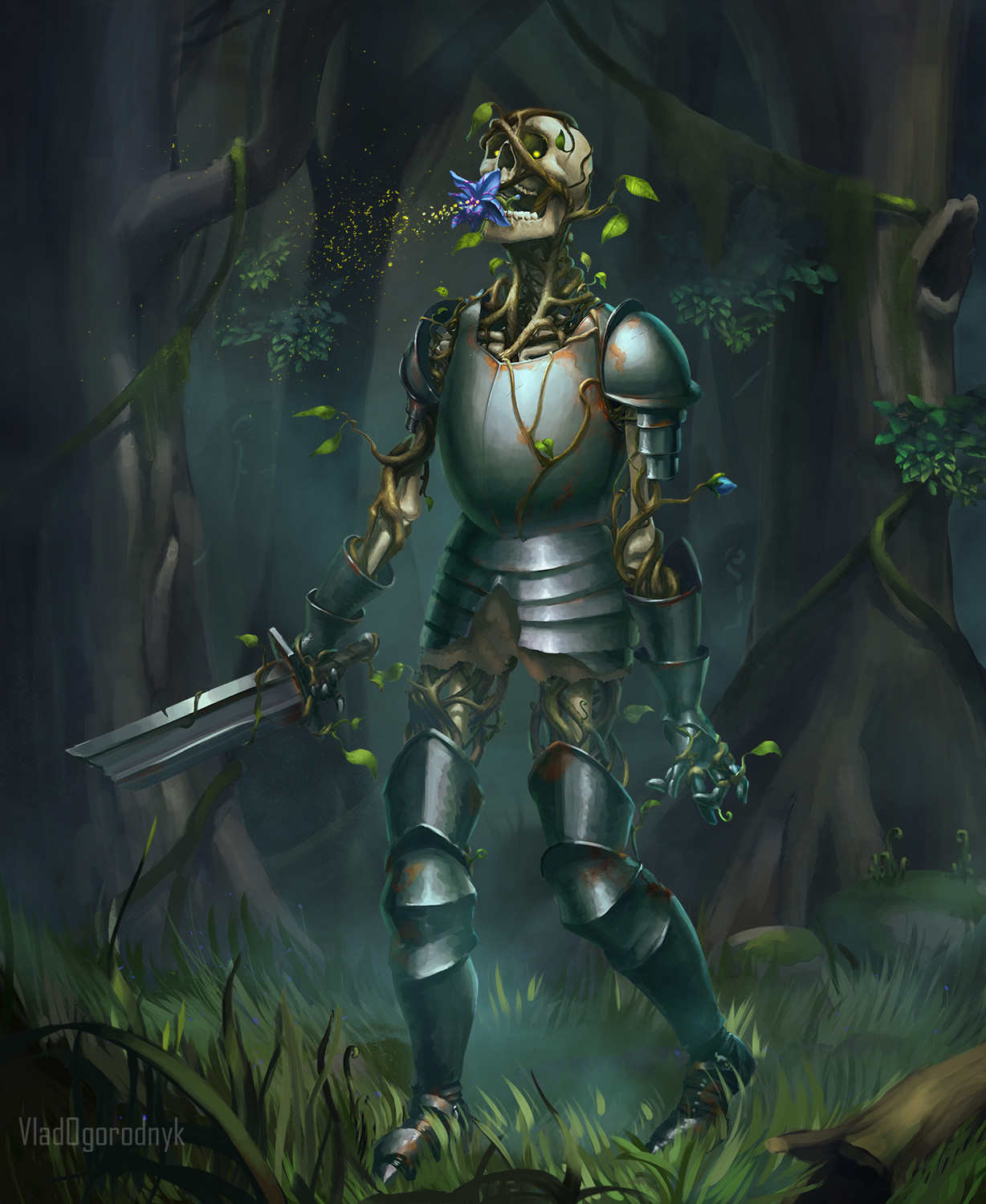Meadow Tack
Meadow Tack is an infection of parasitic plants found throughout the Eudrose sub-continent in temperate and mild climates. Most healers and herbalists may miss identify the infection as a curse due to the rampant plant like growths and flowerings, but more adept healers and medical professionals of rural towns recognize it as the symptoms of a parasitic plant commonly found in deep woods, specifically in meadows or other breaks in the wilderness.
While the symptoms of the infections can be described by some as almost beautiful, the unnatural presence of flowers across a victim's skin is still considered disturbing by most, prompting immediate treatment in nearly all human communities presented with a victim. Due to the chance of infection however, some victims, and in particular travelers, may find themselves ostricized.
Transmission & Vectors
The primary vector for transmission is through contact with parasitic plants, most often found in a meadow or other large foliage dense break in a forest. After infection, the host will be non-infection for up to three days, after which the infection can break the skin and spread through direct contact of roots or flowers sprouting from the host. A Meadow Tack infection is notoriously difficult to eliminate and contain.
Causes
While some human scholars have investigated Meadow Tack, it is still an uncommon rural disease, and thus very little is known about it among human civilisations. The only known factor in its infection is the rare parasitic plants found in deep wildernessess of temperate regions. The disease does not seem to occur in warmer or colder climates. If the parasites are allowed to flower to a pollination stage, they can also spread through large pollen "spores", although this rarely, if ever, is able to occur.
Symptoms
After a three day incubation or "growth" period, the parasitic plants will begin to present across the host's body as errant roots and stems sprouting from underneath the skin, eventually flowering from buds as unique red, yellow, orange and pink flowering bodies.
Other symptoms of the infected include
- Increased thirst and hunger
- General fatigue and weariness
- Rashes near and on sites of emergence of roots and stems from the skin
- Insomnia
- Indigestion
- Lowered body temperature
- Increased lethargy and lack of motile responses.
- Paranoia
- Increased aggression and confusion (in rare, serious cases)
Treatment
Low level healing spells and healing droughts are ineffective and considered dangerous to use during an infection, as the healing may actually increase infection by encouraging plant growth. General treatment can be performed by the host through pruning of the emerging roots and stems, though more invasive and thorough pruning will be needed to remove the infection. Some successful, non-invasive methods have been used by alchemists and herbalists throught the mixture of certain compounds and drugs that essentially act as a non-poisonous herbicide inside the body, but this is not always effective.
Some frontier and remote towns and villages are rumored to have been aided by nomadic elves who seem to have a much better understanding of the infection, and are able to remove it with ease. Despite this the few half-elves living amonst humans have been unable to help in understanding and eradicating Meadow Tack.
Prognosis
If the infection is allowed to advance to a later stage of growth, the parasitic plants can infest a hosts skin to nearly cover their entire body, posing a serious health risk of root infections in the hosts organs, interrupting normal organ function and even resulting in organ failure and death.
Sequela
Meadow Tack infestations can have long lasting complications after successful treatment. Many victims show signs of long lasting paranoia, insomnia, and in severe cases low levels of psychosis. This is believed to be caused not only by the presentation of roots, stems, and flowers on the host's skin, but also by the noise the infection is reported to make inside the host, as many victims of the infection have reported being able to the hear the roots and plants growing inside them at night when it is quietest.
Prevention
Most human communities have formed their own preventitive practices against Meadow Tack, but a general rule for avoiding infections is to be aware of meadows and other breaks in the forest while traversing large expanses of wilderness, and never rest or make camp in those meadows and open air groves that are deep inside a forest. General use of herbicides is also a very effective method for preventing infection.
Type
Parasitic
Origin
Natural
Cycle
Chronic, Acquired
Rarity
Uncommon
Remove these ads. Join the Worldbuilders Guild



Comments